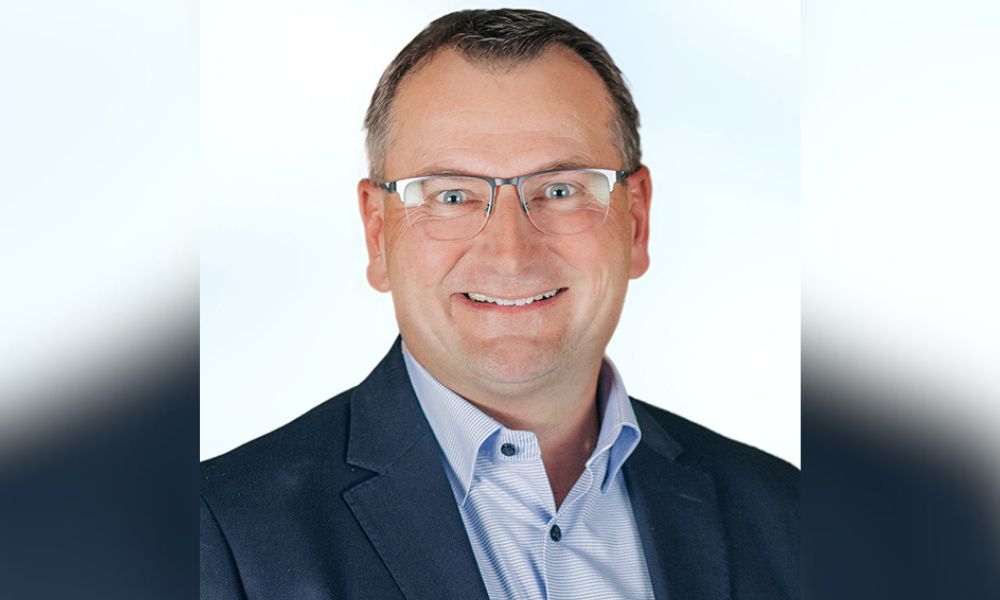Duck Creek CEO calls for different strategy to take on "perfect storm" of risks

Duck Creek CEO calls for different strategy to take on “perfect storm” of risks | Insurance Business New Zealand
Catastrophe & Flood
Duck Creek CEO calls for different strategy to take on “perfect storm” of risks
Sustainability, he says, now depends on tech and data
Catastrophe & Flood
By
Daniel Wood
“Increasing prices and pulling risk levers may be appropriate in response to short-term changes,” said Mike Jackowski (pictured above). “But, if this is the new normal, customers won’t be able to absorb a long period of increased prices or reduced coverage.”
Jackowski is CEO of Duck Creek Technologies, the US-based global firm specializing in digital insurance technology. As many insurance firms end 2023 after spending much of the year increasing their premiums and reducing their risks, the CEO gave them a strong but diplomatic warning.
“We’ve seen that some insurers increase policy prices or reduce their risk appetite as the primary means of navigating this period,” said Jackowski. “This strengthens their business case, yet, in some areas, it can lead to poor customer outcomes and contribute further to the pressure customers are under.”
How to meet a “perfect storm” of challenges
Jackowski was recently in Australia at his firm’s Sydney conference: Duck Talk Redefining Resilience. He told Insurance Business that his firm’s fastest growing markets are across APAC.
However, much like insurers across the rest of the world, APAC focused insurance firms are facing very serious challenges.
Jackowski described those challenges as “the perfect storm” of global inflation, increased funding costs and rising interest rates, more regular and compounding natural disasters and international conflicts negatively “impacting the entire insurance value chain.”
He expected this scenario to be “the new normal” – for a while, at least.
“Insurance customers, both SME and personal lines policyholders, are under immense pressure on multiple fronts,” said Jackowski. “Like their customers, insurers are feeling the pressure globally.”
A sustainable strategy
He called on insurance companies to adopt a different strategy to deal with this extreme situation.
“Navigating this period calls for a different response by insurers if they want to continue to deliver improved customer outcomes and policyholder confidence well into the future,” said Jackowski.
He said approaching resilience differently, with more emphasis on data and technology, is more sustainable and can benefit both insurers and their customers.
“The insurance industry has experienced highly challenging periods in the past and has constantly confronted and navigated change well and come out stronger and more resilient on the other side,” said Jackowski. “I believe this period of challenge, like many in the past, will be met head-on by insurers.”
The Duck Creek CEO said, during 2023, he’s noticed insurers all over the world, taking “real strides” to better manage risk and maintain coverage. He said increased participation in the Cyclone Reinsurance Pool and increases in reinsurance coverage were examples of this.
However, he said these initiatives are often on the business side of insurance rather than the customer side, where more needs to be done.
“There’s the opportunity and need for insurers to take a more significant role in helping their customers manage and mitigate risk,” said Jackowski. “With customer-side risk reduced or mitigated, this benefits the insurer.”
Showcasing ways to engage customers
The Duck Creek Sydney conference showcased some ways insurers can engage in mitigating risks on the customer side.
For example, the volunteer led organisation, Disaster Relief Australia (DRA), focuses on disaster prevention and mitigation. A major part of that involves encouraging local communities to become resilient.
The DRA’s Shane Fitzsimmons and Shari Bent showed how this organisation – now more than 2,500 volunteers across Australia, many of them military veterans – could help insurers and brokers more effectively engage with local communities facing flood and fire risks to help dramatically improve disaster resilience.
The result could be more affordable and available insurance.
The basic tool in Moss and Bent’s talk was very old school: giant, physical Big Maps of local areas that can be rolled out and walked on.
Moss described how mums and dads behave when they attend the meeting and stand on this map. The first thing they do, he said, is locate their own home.
“Once they find their house, they then work out where June’s place is, then the shop that they pass on their walks,” said Moss. “Then they go: ‘What’s that?’ And they see that they have a state forest near them and realise, for the first time, how close it is.”
After that, he said, they probably spot the river on the map with its flood level marker.
Moss and Bent said this Big Map tool facilitates the stakeholders in a local community taking ownership of local risks and then developing a plan to deal with them.
What do you as see as key to the future sustainability of the insurance market? Please tell us below
Related Stories
Keep up with the latest news and events
Join our mailing list, it’s free!






